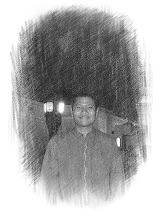In part one I explained how the backhand slice can be a great neutralizer of power and an opener for point winning opportunities. Now I am going to show you the ever so important relationship, among time, speed and spin of the ball.For example, a majority of professional players today attack with incredibly fast cross-court strokes, usually top spin and get passed systematically or do not even make it to a confortable position at the net and therefore volley poorly. While few other professional players hit the ball a lot slower but mostly down the line (or up the line if you will) deep with slice, thus getting alot closer to the net and being able to put the volley away. The main factor in both cases is time and its relationship with ball speed, ball spin and the players movement.Players in the first situation besides hitting a non percentage attack shot by going cross court, when striking the ball hard, fast and with topspin they are trying to take reaction time away from their opponents. Nevertheless, in most cases opponents are quick and the higher bouncing topspin ball full of pace allows them to hit the passing shot before the attacker even has reached a comfortable volleying position at the net. Additionaly the court gap the attacker leaves at the opponents discretion by going cross court with the approach means, getting passed, hitting a volley on your shoe strings or hitting a generally poor volley to get passed in the next shot.Much in the style of play of the 50's, 60's and 70's, in the second case because the slice ball is substantially slower it may seem to advantage your opponents time to get earlier to it but, in reality it is in your advantage; you will have more time to run up to the net, while the slower ball is in flight and your opponent can not do anything about it but, wait for the ball to bounce! This will allow you to get in closer to the net and in most cases to hit your opponents passing shot attempt with a winning volley of your own while the ball is in a position higher then the net. Further more, your adversary will have to deal with a deep low skidding ball and a possible need for a slight change of grip to attempt to get under the ball, which will make it much harder to hit an effective passing shot.Here I do not pretend to have given you all the ideas and solutions for the use of the slice backhand, but I am sure that it is a good start for you to build a better game.Remember never underestimate the "oldies" there are many good things to learn from players from all eras in tennis. For example; millions of us tennis lovers would give anything to hit a ball as well as these 3 "Great Oldies":Donald Budge, Lew Hoad or Ken Rosewall. (There are some very interesting video clips from these players on my website.)The important thing is to play the most effective game with the least effort possible, when you have achieved that you have mastered the game. Young Roger Federer is an excellent example.Copyright © 1999-2005 Tenniscruz.com®. All rights reserved.
Article Source: http://www.articledashboard.com
Sérgio Cruz is an ex # 1 National Champion, Davis Cup Player from Portugal and former Coach Jim Courier ATP World Ranking # 1 cruz@tenniscruz.com www.tenniscruz.com
Thursday, May 10, 2007
Subscribe to:
Post Comments (Atom)



No comments:
Post a Comment